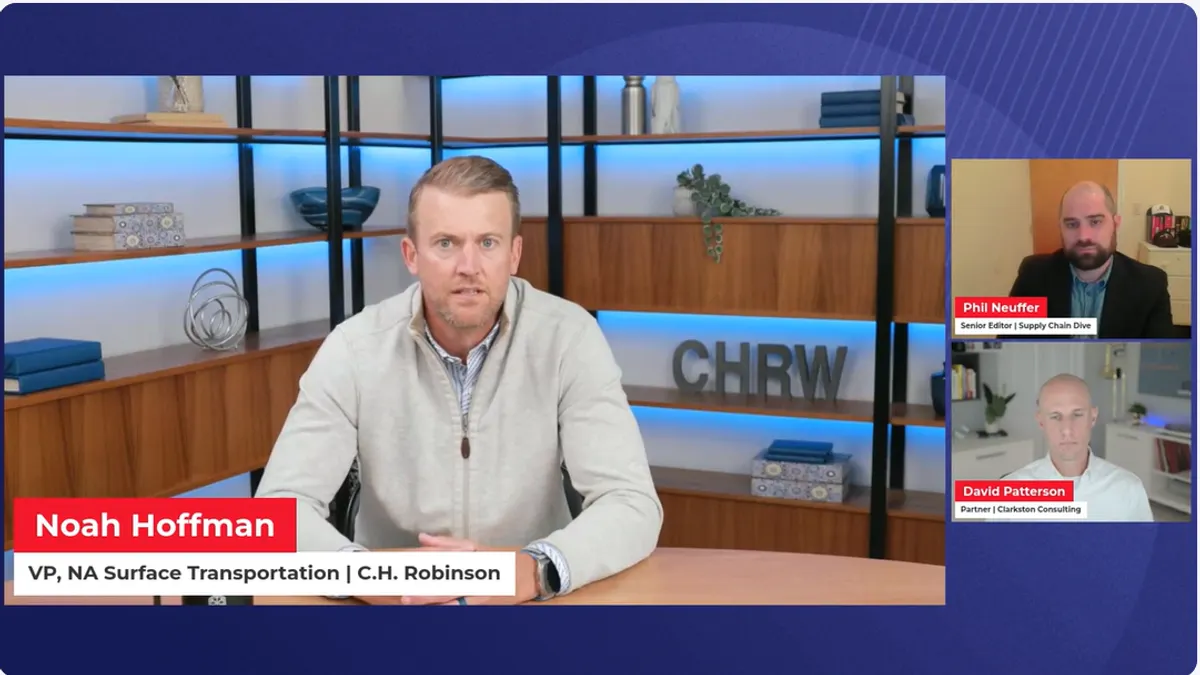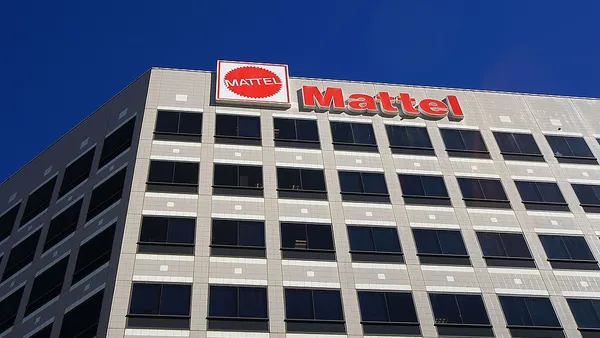Today’s economic climate is defined by persistent headwinds. Inflation remains a stubborn force, interest rates are at multi-decade highs, and cost containment is a top priority for many organizations. Companies of all sizes are feeling the squeeze with capital expenditures under review, operational budgets tightening, and forecasts being more cautious than optimistic.
Yet amid these financial challenges lies a parallel trend that supply chain professionals cannot afford to ignore: a rise in property-related crime. Historically, there has been a strong correlation between economic downturns and increased theft, especially when it comes to high-value materials, heavy equipment, and fuel. In tough times, desperation grows, and with it, opportunistic criminal activity.
Supply chains, which depend on the smooth and timely movement of physical goods, are increasingly in the crosshairs. As risk rises, the question becomes: What are supply chain leaders doing to proactively protect their operations from disruption, reputational damage, and loss of revenue and physical assets?
Supply Chains Are Vulnerable by Nature
To understand why supply chains are such attractive targets, consider their physical layout. By necessity, goods are stored, staged, and transported across a sprawling network of facilities, many of which operate 24/7, span rural and urban areas, and vary significantly in how they’re secured.
For example, it would be difficult to find supply chain businesses that can’t identify with at least one of these common vulnerability points:
- Truck yards and logistics terminals where trailers are parked for hours or days.
- Construction sites and staging areas with minimal fencing or night supervision.
- Warehouses and distribution centers with gaps in perimeter coverage.
- Remote storage lots for surplus equipment, inventory overflow, or fleet vehicles.
In addition, each of these nodes is essential to operational flow, and each presents a unique exposure:
Cargo theft has surged in recent years. In North America, organized criminal groups target hot commodities like electronics, food, pharmaceuticals, and building materials. Often, goods disappear while parked in unsecured lots.
Copper theft continues to plague construction and energy sites. With scrap prices high, even small amounts of stolen copper can yield significant payouts — especially if a thief can repeatedly strike the same location. Here’s a great infographic on understanding this trend more.
Catalytic converter theft remains rampant, especially from fleet vehicles parked overnight. These components contain precious metals and are quickly removed with handheld tools. This is detailed here in our recent effort to highlight this growing problem.
Fuel siphoning has spiked with volatile fuel prices leading the cause. Trucks, generators, and heavy machinery are all easy targets, especially when parked in low-visibility areas.
Heavy equipment theft, including skid steers, backhoes, generators and parts, can cripple a project timeline and cost hundreds of thousands of dollars in replacement and delay.
The common threads across these incidents lie within visibility gaps (think weekends or after hours) and in rural locations where response times are long, and surveillance is lacking. Criminals look for darkness, silence, and distance — visibility gaps that traditional security measures often fail to address.
The Hidden Cost of Being Reactive
Many companies approach physical security as a passive function — something that gets attention only after an incident occurs. This reactive approach can carry heavy costs, well beyond the value of stolen goods:
Missed deliveries and delayed jobs: Stolen goods, damaged infrastructure, or unavailable equipment can stall operations. In industries like construction, manufacturing, and retail, this can trigger late penalties, lost revenue, and customer dissatisfaction.
Lost time managing the aftermath: Investigating a security breach is rarely quick. Your team may spend days coordinating with law enforcement, filing insurance claims, and conducting internal audits. During this time, production slows or stops. In this case study, we’ve highlighted the challenges of how operational downtime can affect a business after a breach happens.
Insurance premium hikes and coverage gaps: Even if losses are covered, frequent claims can lead to higher premiums or stricter policy terms. And some losses (like project delays) may not be covered at all. You can learn more about these risks in this article that details the insurance costs for businesses with security failures.
Employee morale and safety concerns: Workers who feel unsafe or see repeated theft may become disengaged, less productive, or more likely to seek employment elsewhere.
Reputation damage: News of a security incident can affect customer confidence and brand equity, especially if delays ripple across multiple clients or markets.
The indirect cost of theft often dwarfs the value of what was actually stolen. It’s not just about what gets taken. It’s about the disruption it causes, the trust it erodes, and the time it wastes. Read our blog about reactive security for more about the real costs. Then take a closer look at the benefits of having a proactive versus reactive security plan in place.
Security as a Strategic Investment, Not an Expense
Forward-thinking organizations have started to challenge the traditional view of security as a costly measure. Instead, they’re reframing it as a form of risk mitigation and operational resilience. In a modern business plan, it is just as important as cyber defenses, regulatory compliance, or supply chain diversification.
Security is no longer just about fences and guards. It’s about intelligent design, layered deterrence, and real-time visibility.
Here’s how industry leaders are upgrading their multi-layered approach:
- Electric or monitored fencing to actively deter intruders.
- Expertly planned LED lighting to eliminate dark corners and improve visibility, starting at the perimeter. Read more about lighting strategy for commercial properties here.
- Surveillance cameras with AI capabilities to detect and analyze unusual behavior.
- Motion sensors and alarm systems that alert response personnel instantly.
- Remote monitoring and automation, especially if you need to oversee multiple facilities simultaneously. When combined with AI-powered analytics, these systems can flag threats in real time, escalating only when human attention is truly needed. Learn how strategic commercial property lighting can enhance security and deter theft.
- Access control systems that log who enters and exits facilities, and when they are allowed to do so. You can learn more about access control systems and their business benefits here.
In addition to layered security solutions, even minor design changes can significantly impact a business’s overall security posture, stemming from a strategic approach:
- Limiting entry points reduces vulnerability and unauthorized access.
- Elevating camera placement enhances visibility and coverage.
- Repositioning high-value assets away from perimeter fencing deters smash-and-grab opportunists.
Ultimately, the return on investment in security goes beyond preventing theft — it’s reflected in reduced operational downtime, safer job sites, more efficient deliveries, and greater peace of mind.
Advice to Supply Chain Leaders
Now that vulnerabilities and security strategies have been defined, and the hidden costs of poor security planning have been revealed, what advice should you rely on to take action?
If you haven’t reevaluated your physical security posture in the past year, now is the time. Here are four key steps:
- Audit your vulnerabilities.
Walk your facilities with fresh eyes, or bring in a third-party expert. Look for access points, blind spots, and nighttime risks. - Build security into operational continuity plans.
Just as you plan for natural disasters or system outages, plan for physical intrusion. What’s your response protocol? Who gets notified? How fast can you recover? - Budget for security strategically.
Treat security upgrades as capital investments, not reactive expenses. Prioritize high-risk locations and quick gains for your dollar. - Partner with specialists.
Don’t go it alone. Work with security experts who understand logistics, construction, manufacturing, and transportation — industries where the assets are mobile, high-value, and often hard to monitor.
Final Thought
In an era of economic uncertainty, growth is not the only goal. Stability, uptime, and resilience are equally critical. And they begin at the perimeter.
Every truck, trailer, generator, and pallet of goods represents value — not just in dollars, but in the promises made to customers, the wages paid to employees, and the momentum of your operation.
Don’t wait for loss to highlight your blind spots. Reevaluate your security posture today before a single incident costs you far more than the investment required to prevent it. Contact your AMAROK security expert to identify vulnerabilities and fortify your defenses.










